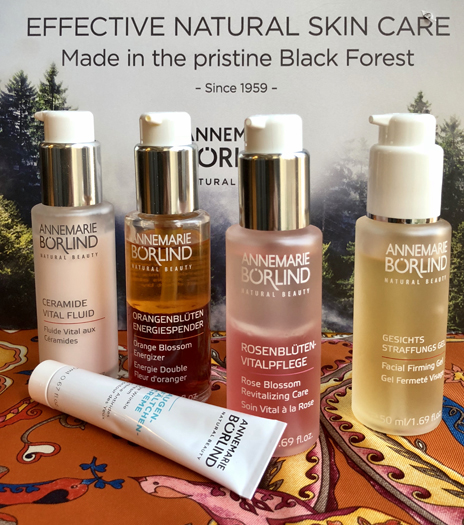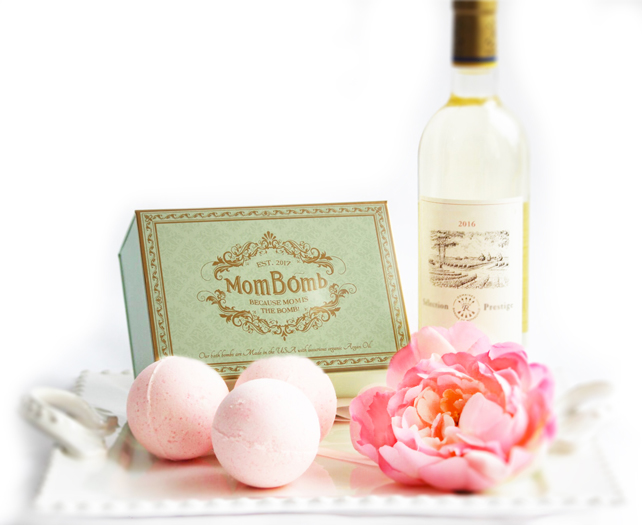Beauty & Cosmetics
Trends and insights on marketing health and beauty brands
Published
6 years agoon
By
Linda Casey
Research from global information company The NPD Group shows that the U.S. prestige beauty industry reached $17.7 billion in 2017, and Larissa Jensen, executive director and beauty industry analyst at The NPD Group notes that the market is in the midst of a great amount of change.
“Change was the theme of the beauty industry in 2017, from the shifts in trends and category performance, to the wave of mergers and acquisitions which show no signs of abating in the near future,” says Jensen. “The industry has not only adapted to this change, but has continued to achieve strong and consistent growth, as it has seen for the last few years. We can expect change to continue to be the catalyst of growth for the industry in 2018.”
After several years of soft performance, skincare was revitalized in 2017. Reaching $5.6 billion in sales, growth has stemmed from smaller segments including masks (+32%), facial exfoliators (+12%) and cleansers (+6%), and other face products (+39%) which, among other items, includes emerging formats, essences, and facial sprays. Larger segments such as facial moisturizers (+7%), skincare’s largest by dollar volume, and age specialists (+7%) also fared well in 2017. The body, sun, and hair care segments of skincare all experienced growth as well.
Though makeup’s growth rate slowed in 2017, it remains beauty’s largest category, bringing the most dollar volume to the industry and $8.1 billion in 2017. Growth was driven by high volume segments including foundation (+7 percent) and eye shadow (+13%), as well as other face products such as bronzers, highlighters, and glow products. Sales were also positive for other key segments like face primers (+17%), concealer (+10%), eyebrow makeup (+7%), and lip color (+2%).
In fragrance, where sales totaled $4.0 billion in 2017, juices grew by 4%. Niche areas of the market including natural and artisanal fragrances grew their sales by 32% and 14%, respectively. Beyond the body, the home scents market is booming. It has added $44.4 million in sales since 2014. Sales reached $80.4 million in 2017, up 59%. This is building off of 18% growth the segment saw in 2016. Growth drivers for the market in 2017 included candles (+56%) and the smaller segment of home ancillary gift sets (+165%) which include candle and reed diffuser gift sets.
The prestige beauty industry had a good fourth quarter in 2017, with sales consistently strong throughout the holiday season. Across the industries tracked weekly by NPD throughout the season, beauty was the growth leader during various weeks including Thanksgiving/Black Friday week. Some of its hottest holiday sellers were false eyelashes, lip gloss, skincare sets and kits, and home ancillary gift sets. Overall, fragrance juices brought in the most dollars for the entire holiday season driven entirely by Christmas week, followed by makeup and skincare face products, which showed consistent growth throughout the holiday season.
Advertisement“As beauty brands and retailers look to understand ‘what’s next’ to keep the momentum going, their focus should be on developing new and alternative ways to engage with consumers,” says Jensen. “Amidst the news headlines around store closures and challenges facing traditional department stores, it’s important to remember that brick-and-mortar is a critical component to driving growth.”
Conversation starters
Clearly, the cosmetics and health and beauty aid markets are crowded with new brands and there are multiple challenges for brands that want to attract a shopper’s attention. That’s why package design and the message a company tells is key.
“Competition among brands in the cosmetics space is intense,” says Steve Corsi, a consultant for Robert’s Beauty. “You’ve got established global brands with influence, reach and large marketing budgets alongside upstart niche brands that are appealing to more of the millennial and Gen Z demographic. You need to create a dialogue with the consumer; it’s all about touchpoints and making sure they support the conversation you want to have.”
A major obstacle to branding beauty products is finding a way to speak to everyone but make them feel that they are the only one.
“The traditional players have seen some erosion in some areas as new players are coming in all the time so maintaining market share is tough,” Corsi says. “In an effort to be inclusive to all within a targeted consumer group, it can become very apparent when a group [whether based on age, race, religion, gender, etc.] is not represented in product offerings and images. A balance is needed in celebrating both diversity and the individual.”
AdvertisementOne thing companies are doing wrong, Corsi says, is bringing in too many SKUs for its products.
“What I advise is to get that hero product, that killer product, and that’s what you push and push it hard,” he says. “Don’t invest too much and spread yourself too thin.”
Hitting the touchpoints
From a marketing standpoint, omnichannel initiatives are key in order to generate awareness and drive sales. But ultimately, it’s about engaging with consumers on their terms, and brands that do it best will find success.
Zotos Professional, makers of the AgeBeautiful hair color line of products, wanted to drive visitation to retailers that offer its products, and boost awareness of its own product line to drive sales.
It teamed with location data company PlaceIQ and media agency Media Horizons to create a location-based media campaign that sought to promote Zotos offerings via a limited time, $3-off promotion delivered via mobile ads. These ads also featured a store locator feature, to help potential buyers find their nearest retailer.
AdvertisementA key goal for Zotos was driving awareness and visitation among female audiences that frequented hair salons and those that had purchased competitive haircare products and specific women’s apparel brands. The result was a 20% visitation lift to the key retailer that offers its product line and nearly doubled visitation among audiences that had recently visited beauty salons, measured over a control group.
Georgiana Rowley, brand manager for AnneMarie Börlind, says the key to marketing and branding the company’s products in 2018 is getting the message across that the products are unique and made with ethically sourced raw materials that surpass the highest European standards for skin care, such as using natural non-GMO ingredients and pure thermal spring water from its own deep well in the Black Forest.
“We also connect specific products with key ingredients from one of the company’s many global socio-ecological projects we actively support or subsidize,” she says. “Our 12 global projects provide jobs, education and enrich the lives of local populations worldwide, assuring fair trade, humane conditions, eradicating child labor.”

For example, the AnneMarie Börlind Rose Blossom Revitalizer uses roses from the “Roses Not Opium” project in Iran, where the company grows its own Damask roses where opium poppies used to grow, eradicating opium trade in the region.
Heather Roberts, founder of MomBomb.org, takes sales of its bath bombs and applies it towards a charity that helps moms going through a difficult time.
The brand gets its important message out through a multi-tiered program.
“Mom Bombs has a mechanism to retarget people that have come to the site, and we can get as granular as serving different messages to men (‘Don’t forget Mother’s Day!’) to women (‘You deserve to treat yourself,’) Robert says. “We don’t even know who these people are, but we can follow them around the Internet after they click on our site.”

Reflect diversity
While personalization is important, Corsi also sees a trend towards more inclusivity and diversity in approach, especially in package design. “Many brands have recently expanded their color ranges, and images are featuring more generational and cultural diversity,” he says.
Rowley agrees with this philosophical approach to design. “Our packaging is international (we are sold in 40 countries) and while that may present a challenge for the American consumer seeing multiple languages on the packaging, we think it’s also our strength as the packaging clearly indicates a global presence for our brand and products,” she says.
AdvertisementThe importance of influencers to a brand
Rebecca Young, senior business Manager at Daymon, notes beauty and cosmetic brands and retailers need to connect with women, inspiring them to embrace their personal look and style with confidence. And one of the best ways to make that connection is through great brand experiences.
Additionally, the role of influencers cannot be emphasized enough, especially in the world of beauty. Trusted influencers such as Kylie Jenner can make (or break) brands with a single post. And brands who do not utilize influencer marketing, or do not utilize it correctly, are the ones that will get left behind.
“The influencers you choose to represent your brand need to be authentic in voice and in audience,” Young says. “Due to the ‘gold rush’ in influencer marketing, there are several influencers who have fake followers, don’t engage with their audiences consistently, or misrepresent themselves. Do your homework to ensure your influencers can best represent your brand.”
The rise of social media
In September 2017, pop superstar and fashion icon Rihanna launched Fenty Beauty with a full line of color cosmetics including the cult favorite complexion matching makeup in 40 shades “for women of all shades, personalities, attitudes, cultures and races.”
“Using the full power of social media, Rihanna promoted the line much the way any powerful influencer would with great content and photos across Instagram, Facebook, and Twitter,” Young says. “This content was also instrumental in creating the buzz and anticipation around the brand prior to the launch all but guaranteeing its success.”
Rowley says it’s vital to post and repost/regram regularly to engage consumers directly through compelling visuals and stories.
“We like testimonials and encourage consumers to engage with us,” she says. “We use every opportunity to tell the AnneMarie Börlind company story.”
Still, while maintaining a new audience is key, Corsi warns that sometimes companies hire inexperienced people to come in and maintain social media and it can hurt the brand.
“It might lead to things that don’t resonate with your brand and its true essence, such as images not being top quality, or a message that isn’t what you want to tell,” he says.
Success in the future, he notes, will be a combination of traditional brick and mortar and online. He cites Smashbox as an example. The company engages customers by having them interact with a 3-D lipstick matching game, so it brings customers into the store and marries it with technology, with the result adding to increased sales for the brand.
“The key will be good beauty in an interactive experience,” Corsi says. “Women love to interact with beauty counters, and the interface between brick and mortar and electronic possibilities in this area will transform and the brands that do it best will be most successful.”

SPONSORED VIDEO
Branding with Ferocity – Thinking Like an Indie Brand
Get a better understanding on how to leverage new technologies to engage and delight shoppers, sustainability’s role in product and package design – being sustainable and premium are not mutually exclusive, plus best practices and tips for collaboration and how to launch new products and refresh existing product line-ups and brands.
You may like
Advertisement
Subscribe

BULLETINS
Get the most important news and business
ideas from BXP Magazine's news bulletin.
Advertisement







